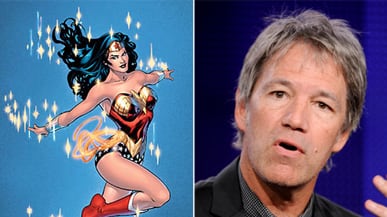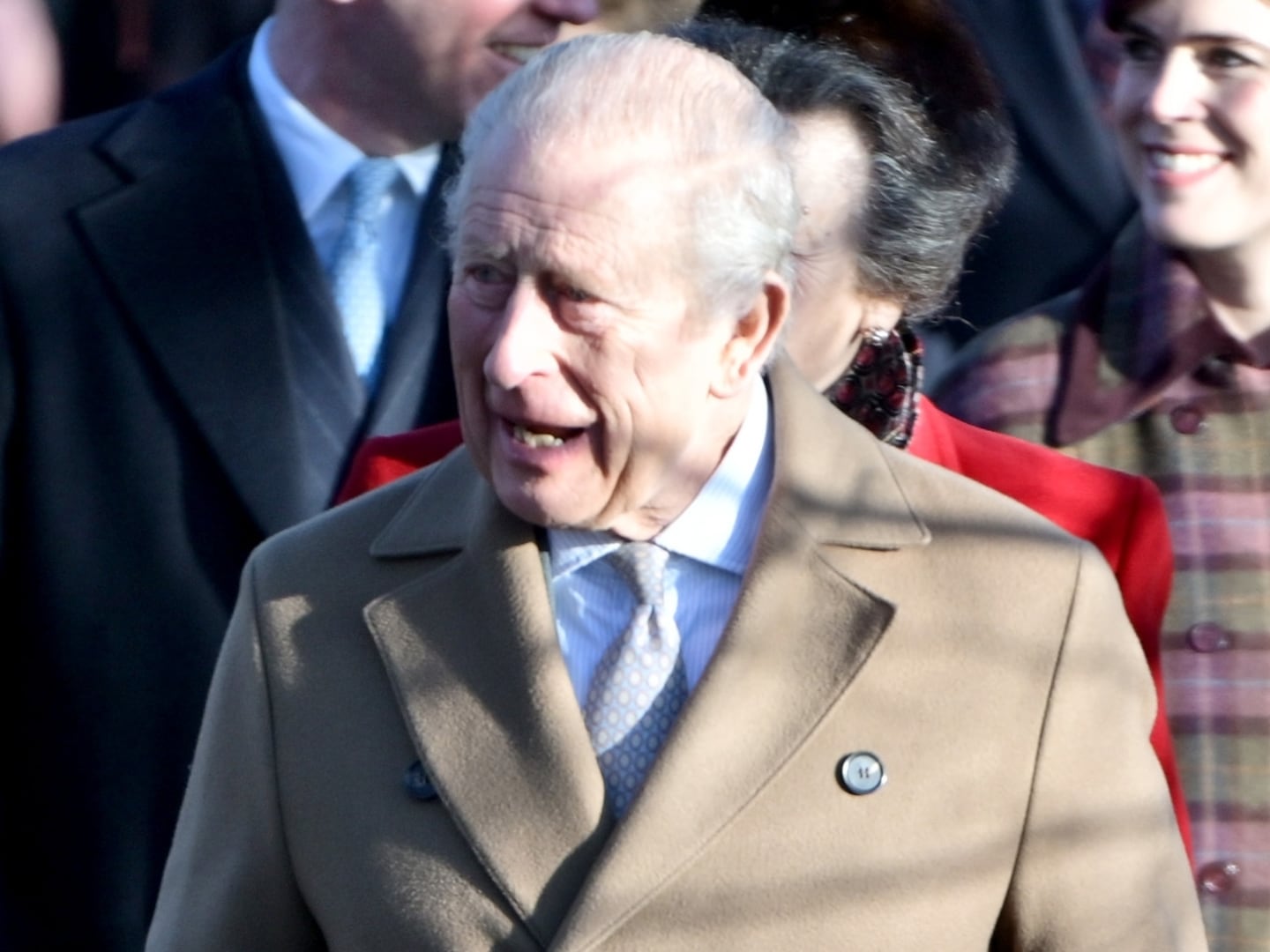The Daily Beast obtained a draft of the pilot script for David E. Kelley’s Wonder Woman, which, it was announced Wednesday, will star Friday Night Lights' Adrianne Palicki. Jace Lacob picks eight crazy bits from the jaw-dropping script.
When considering DC Comics’ legendary comic book icon Wonder Woman, the name that comes to mind isn’t writer/producer David E. Kelley, known for his television legal dramas such as Ally McBeal, The Practice, Boston Legal, and currently the Kathy Bates-led Harry’s Law.

So it surprised many in the television industry—and Wonder Woman-loving comics readers, too—that Kelley was given the go-ahead by studio Warner Bros. Television to develop a take on the lasso-happy Amazonian warrior. After all, several attempts to adapt Wonder Woman, which had also famously been a successful 1975-1979 ABC and CBS series starring Lynda Carter—including a feature film version from Buffy the Vampire Slayer creator Joss Whedon—had fallen flat. And Kelley’s expertise—talky legal dramas—doesn’t seem at first glance to lend itself to the superhero genre. Reportedly, every major broadcaster passed on Kelley’s Wonder Woman project until NBC reconsidered its position and ordered a pilot late last month.
The Daily Beast has obtained a copy of Kelley’s draft of the Wonder Woman pilot script, dated December 16, 2010—and it’s laughably bizarre. In Kelley’s vision, Wonder Woman is presented as a weepy career woman-slash-superheroine with three identities (Wonder Woman; Diana Themyscira, the chairman of Themyscira Industries; and mousy assistant Diana Prince) to juggle.
The pilot episode, which Kelley notes is designed to run “without commercial interruption,” revolves around Los Angeles-based mega-billionaire Diana—who collects planes and a multitude of transforming aircraft called “Ultimates” (no invisible plane in sight here)—as she attempts to take down an evil pharmaceutical company run by morally corrupt scientist Veronica Cale, who is mass-producing a human-growth hormone that is causing its users, mostly black inner city youth, to die. Along the way, she tackles criminals, a Senate subcommittee, and a broken heart, the latter courtesy of lost love Steve Trevor.
Managing to be both cloying and tragically un-hip, Kelley’s Wonder Woman script seems an about-face for this 70-year-old iconic character. Merchandise meetings and legal jargon jostle uncomfortably with superheroics, pajama parties with saving the world.
The result is a Wonder Woman who is more like Kelley’s Ally McBeal than the feminist superhero who stands side-by-side with her fellow DC icons Superman and Batman. This is a woman whose feelings are hurt by people commenting on her breast size, who is looking for love in all the wrong places, and who wants to have it all! (No sign of a unisex bathroom yet but other Kelley tropes seem liberally scattered throughout the script. Fortunately, there’s no dancing baby.) But the stilted dialogue and bizarre narrative conceits pale in comparison with some of the sacrilege being committed here.
What follows are eight of the most head-scratching moments from the pilot script.
One
Pages 3-6: Buffy this isn’t: Diana’s first appearance, here in her guise as Wonder Woman, is a Hollywood Boulevard-based action sequence set, cringingly, to the outdated tune of Beyoncé’s “Single Ladies,” the first of many musical cues—including tracks by Lady Gaga and Kanye West—in the script, all of which seem to prove that a) Kelley is a few years behind the times, and b) he watches a lot of Glee, since nearly all of these songs have been covered by the show choir. We’re meant to see Diana as a fierce female warrior, lasso of truth at her side, as she takes down a fast-moving suspect, but there’s a weird juxtaposition between attempts at humor and plodding “action.”
Two
Pages 8-14: The first of many lengthy heart-to-hearts between Diana and her press secretary, Myndi [sic], that’s meant to play as though the two are long-lost sisters who gab about boys in between high-powered meetings. Here, there’s the additional opportunity for gratuitous skin, as Diana takes a long, hot shower before she opens up about long-lost love Steve Trevor, now a lawyer in the Justice Department. (Wait, really?) Despite the alleged feminist undertones, Kelley uses the scene as an opportunity to dissect Diana’s love life and engage in some stereotypical banter about much-needed makeovers (alter ego Diana Prince is rather mousy because she has brown eyes, apparently, and doesn’t style her hair well) and Myndi asks her how the women of Themyscira have babies. No surprise that war hero Steve Trevor has been redesigned as a lawyer here. You didn’t really think Kelley would do a show without a single member of the legal profession in the mix, did you?
Three
Page 14: The irritating conceit of Diana having three identities gets even more irksome when it appears that she has not one but two places of residence, including a poky West L.A. apartment. But the kicker is that this single lady has a cat named, of all things, Desi, leading Diana to engage in a ridiculously hacky I Love Lucy reference that would cause Lucille Ball to turn over in her grave. If this is what passes for cutting-edge humor and pop culture references these days, television has a serious problem on its hands.
Four
Pages 26-28: One of the most gasp-inducing moments in the script is when Diana has a meeting about the “Asian Wonder Woman” doll that her company is about to go into production on. Yes, Wonder Woman admits to being uncomfortable with the doll’s ample anatomy, leading to a discussion of the size of her breasts and how people are let down when they see her in the flesh. But she seems to understand that the merchandise division helps pay for crime-fighting. “Big tits save lives!” she says, joking, I think. (Yes, read that bit again for good measure.) But the image-conscious Diana draws the line at a fat Wonder Woman. Har har. If you thought this laughable script was missing fat jokes, well, now you’ve got them.
Five
Pages 29-31: Themyscira Industries employs an in-house evidence team known as “The Animals” who work in an area called “The Dungeon.” The twentysomethings here—including Austy, Jennie, and Ryan—dance around to Kanye West’s “Golddigger” when they’re not making sexually provocative comments toward their employer. A comment about boning up on Diana’s rival Veronica Cale results in Austy making a comment about how he’d “Bone you up right now, boss.” (A page later, he admits to having “Chlamydia” when asked if the group has “anything else.”)
But the worst has got to be the way Diana addresses the group, saying, “OK, class, we got ‘bidness.’” Just ick. Wonder Woman as a woman trying to understand “man’s world” from her vantage point as an outsider is one thing, but the way that Kelley is painting her, alternately vain, self-absorbed, weepy, and so desperately trying to be cool is a major turn-off on every page. Let’s not forget that she is one of the world’s pre-eminent superheroes, not a middle-aged white man out of touch with pop culture. The only thing missing from this cringe-worthy portrait is for her to break into a freestyle rap.
Six
Pages 38-47: In the script’s most painful sequence, Diana is subpoenaed by the Senate Judiciary Committee and forced to give testimony about the events in Hollywood. She ends up filibustering about everything under the sun for several pages: the politics of the LAPD (name checking ex-police chiefs Daryl Gates and William Bratton), the economy, stimulus funds, pharmaceutical companies, Roger Clemens, the FDA and the FCC, and how networks will air commercials about erectile dysfunction but not for condoms. It’s clearly meant to be a showcase scene for the actress playing Diana, a calculated bid at awards and social relevance. Congratulations, David E. Kelley, the transformation of Wonder Woman from superhero to personal mouthpiece is now complete. Adding further insult to injury: real-life California Senator Dianne Feinstein is described as giving Diana a thumbs-up.
Seven
Pages 47-50: Diana goes weak in the knees when Steve Trevor turns up in D.C., proving stereotypically that she’s not invulnerable, after all, when it comes to—ugh—matters of the heart. Despite the fact that both have moved on, there is obvious unresolved history here, after four years apart. The fact that they meet cute outside her Senate hearing is somewhat icky, but the forced nostalgia here, supposedly buoyed by the numerous flashbacks to their time together, fails to hit the mark. Cloying and predictable, this storyline seems to belong in another show altogether.
Eight
Pages 61-66: Diana and Myndi have a “sleepover,” complete with ice cream (“It’s been a three-scoop day”) as they watch Katy Perry’s sexually suggestive Wonder Woman homage music video and “scream like schoolgirls.” Later, Diana glimpses her original costume in the closet (the Lynda Carter one!) and sadly stares at a picture of herself and Steve in happier times, before crying herself to sleep.
It’s meant to paint Diana as remarkably human, but it again serves to undercut the character, making her appear weak and weepy. It’s overkill as we already see how much Diana is affected by the lack of romance in her life, but turning her into a single girl with a Mr. Big complex seems a step way too far. We want our superheroes to be strong but human, but seeing Diana like this so early on, potentially destroys any appeal the viewer might have for her. It is another monumental misstep by Kelley, as well as a complete disconnect with the legacy and strength of this enduring character.
Jace Lacob is The Daily Beast's TV Columnist. As a freelance writer, he has written for the Los Angeles Times, TV Week, and others. Jace is the founder of television criticism and analysis website Televisionary and can be found on Twitter. He is a member of the Television Critics Association.






